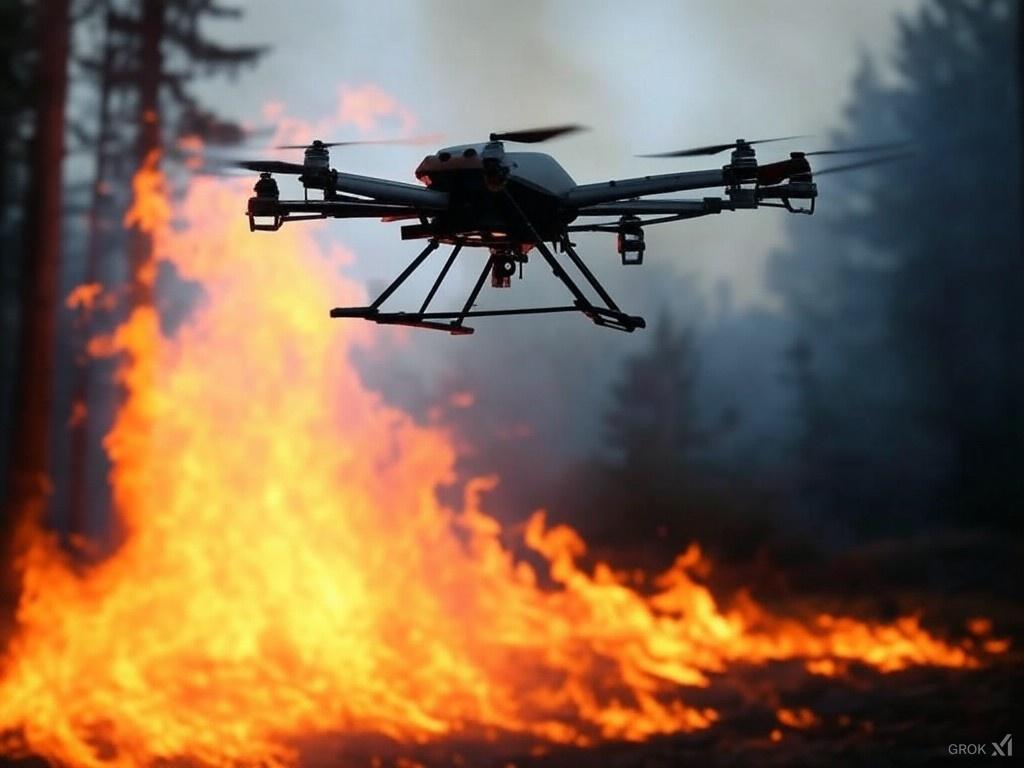Using Drones to Fight Californian Wildfire Terror

8 January 2025
Wildfires ravaging Los Angeles, fueled by fierce Santa Ana winds, have lead Governor Gavin Newsom to declare a state of emergency. However, amidst the chaos, drones have become unsung heroes, offering a new frontier in firefighting strategies.
The Palisades Fire, among others, has scorched over 2,900 acres, threatening over 13,000 structures and forcing thousands to evacuate their homes in the dead of night.
The fires have not only been a test of human resilience but have also spotlighted an often overlooked aspect of modern living – the intertwining of technology with our daily survival.
Drones, once the playthings of tech enthusiasts or tools for aerial photography, have transformed into vital assets in emergency responses. They provide real-time data, navigate through smoke and wind where helicopters dare not go, and offer a bird's-eye view that traditional methods simply can't match. In these fires, drones have been deployed to monitor fire lines, assist in directing ground crews, and even drop small fire-retardant payloads. This shift towards a more tech-centric approach in managing natural disasters might just be the dawn of a new era in emergency management, one where silicon and software stand shoulder to shoulder with human bravery.
The deployment of drones in these fires underscores not just a technological revolution but also a philosophical one. It challenges the traditional bravado of firefighting with a more calculated, data-driven approach. Where once firefighters would rely solely on their experience and gut feeling, now they're complemented by algorithms and thermal imaging. This isn't about replacing human effort but enhancing it, potentially saving lives by reducing the exposure to danger.
Yet, this innovation also brings forth a myriad of questions. How much should we depend on technology in crises? Are we at risk of over-relying on these tools, potentially diminishing the human element of decision-making? Moreover, the integration of drones into such high-stakes scenarios raises privacy concerns, especially in densely populated areas like Los Angeles. As these devices buzz overhead, capturing images and data, the public's right to privacy in times of turmoil might be inadvertently compromised.
The use of drones also highlights a stark contrast in socio-economic responses to disasters. Wealthier communities, like those in Pacific Palisades, might benefit more from these technological advancements due to their proximity to resources and decision-making centers. This could exacerbate the divide in disaster response quality, where the affluent get quicker, tech-aided responses while less privileged areas might still be grappling with more traditional, and perhaps less effective, methods.
As we delve deeper into this narrative, it becomes clear that the wildfires in California are not just about the physical destruction but also about how society responds in the face of adversity. The fires have stripped away the veneer of control we often assume over our environment, revealing the raw power of nature and our reliance on technology to mitigate its fury.
The likely impact of these fires will ripple through California's communities for years to come. Beyond the immediate loss of homes and the displacement of residents, there's the long-term battle with ecological recovery. The charred landscapes will take decades to regenerate, affecting local wildlife, water supplies, and air quality. Economically, the rebuilding will be costly, but there's also an opportunity for innovation in construction, perhaps leading to more fire-resistant building materials and designs.
